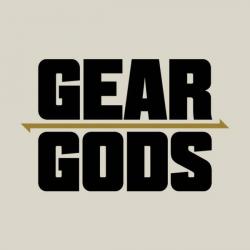
There’s no magical piece of audio equipment that works the same way for every situation 100% of the time. It just doesn’t exist. And you can take that further by saying that there’s no approach to recording and mixing audio that works 100% of the time. You have to be willing to try different things. And you have to work very hard to kill your preconceived notions that a certain piece of gear is going to be “the one.”
I have noticed that there is some gear that works out most of the time. I call it my 85% gear pile. It’s taken me 15 years to really refine what’s in my 85% pile but I gotta say, it really works. 85% of the time the stuff in this pile gets the job done well for whatever record I’m working on.
Lets take a peek into this pile I’m hoarding… Last time we started with some of my top choices for small diaphragm condensers on cymbals. Now we’ll continue with dynamic microphones for drums.
This time I have 4 choices. I just couldn’t narrow it down. Sure there are some honorable mentions like an RE20 for bottom mic’ing toms or a D6 on floor toms but here’s what works for me 85% of the time.
1. Shure SM57 and Audix i5 (tie)
Surprised? You shouldn’t be. Besides the fact that the 57 is built so well that it can be used like a hammer it just sounds great for a few uses, primarily snare. First of all, it will survive getting nailed by a drummer. Second, it has a really nice mid range thwack that, if you control properly, can be really nice. However, I find that adding nice high end is always needed. And that’s where the i5 comes in. The i5 seems to be naturally where I have to EQ the SM57 to be. So I would characterize them like this: SM57 is more dry and nasty sounding, I5 is more high-fi and polished sounding. Both are very similar mics with similar uses. Choose your own adventure!
2. Sennheiser MD 421 on toms
Truth be told I feel like these need a lot of EQ in order to sound right, but once they’re dialed in they can give you those super-detailed thunder toms you’re going for. If you position this one correctly you can get some very isolated tom tracks as opposed to say an Audix D6 that has tons of side garbage coming in. The low mids on this mic make it very suitable for toms as well as for an alternate guitar mic. As long as you get rid of the harsh mids it’s pretty great.
3. Shure SM7B hanging over the drumset down at the snare.
Well, I’ll keep this quick because I’m not too sure why this works. John Browne from Monuments enlightened me to this one. I’m used to using an SM7B on vocals, hi hats, or chinas. However since I’ve begun suspending it over the snare it gives the snare a warmth and oomph that I just haven’t been able to get elsewhere. TRY IT!!!!











Mason Stewart / September 29, 2014 11:41 pm
that sm7b trick sounds killer. gotta try that next time im home
/
Chris Alfano / September 30, 2014 5:59 am
I’m also a fan of just using a large dynamic like an SM7B (or a PR30, RE20, ATM25,.etc) right on the snare as a 2nd top mic.
/
Mason Stewart / September 30, 2014 11:29 am
Ive never actually used more than one mic on the top of the snare, Ive had a lot of luck with actually using three 57’s however, top and bottom at about 30 degrees off the head, and then one dead on the side of the shell about an inch away. Im curious how the SM7b would work as the side mic. Cheers
/
Stevie Bobby / October 1, 2014 6:46 am
I love my pr30 on snare as well as on guitar cabs. I usually try to use the pr30 and sm57 both and shoot them out each time. Large diaphragm dynamics to me are the best of both worlds as It has a wide frequency response, yet maintains all the attack in the transient. I also got great results using a 7b as a kick mic on a demo, was impressed by the sound of it, but since haven’t shot it out against others, might be worth a try.
/